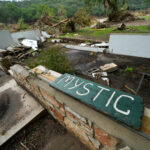DuPont will likely seek to sequester jurors in a 2011 trial that could determine whether it must pay hundreds of millions of dollars in damages to some 8,500 West Virginians who won a toxic-exposure case three years ago.
At a hearing in Clarksburg last Thursday, DuPont attorney Jim Lees cited publicity surrounding the class-action lawsuit over pollution from a former zinc-smelting plant in Spelter. He told Harrison County Circuit Judge Thomas Bedell he’s worried not only about the ability to seat a fair and impartial jury from within the county, but also about media coverage those jurors could be exposed to when the two-week trial begins next March.
Both DuPont and the plaintiffs’ attorneys also want some proceedings in the coming months sealed from public view to minimize pretrial publicity.
Bedell did not rule on whether to seal those hearings, including one set for Dec. 10, but said he’s leaning toward keeping the proceedings public to maintain confidence in the judiciary.
“I have not decided,” the judge said, “but if I’m going to err, I’m going to err on the side of being open and subject to the light of day.”
Bedell said his staff has already identified a pool of 400 potential jurors and he’s confident he can seat an impartial panel. However, Bedell said he won’t hesitate to ask the state Supreme Court to assign jurors from another county if he cannot.
The case centers on a zinc smelter that operated for 90 years in north-central West Virginia, producing more than 4 billion pounds of slab zinc and 400 million pounds of zinc dust for use in rustproofing products, paint pigments and battery anodes.
By 1971, a toxic waste pile stood 100 feet tall, covering nearly half the 112-acre site. Dust loaded with cadmium, arsenic and lead often blew into homes in Spelter and other small communities around the site.
The plant closed in 2001, and DuPont worked with state regulators to demolish buildings and cap the ground with plastic and soil.
In 2007, a jury ruled DuPont was negligent in creating the waste pile, and that it had deliberately downplayed and lied about possible health threats. It awarded $380 million in punitive damages — an amount the state Supreme Court later cut to $196 million.
The high court affirmed that thousands of residents were entitled to a $130 million, 40-year medical monitoring program and a $55.5 million cleanup fund for private properties.
But the March trial on the timeliness of the original lawsuit is the next step in determining whether those damages are ever paid.
Was this article valuable?
Here are more articles you may enjoy.

 Wells Fargo Sued by Ex-Manager Who Said Bank Faked Diversity
Wells Fargo Sued by Ex-Manager Who Said Bank Faked Diversity  Jump Trading Faces $4 Billion Terraform Administrator Suit
Jump Trading Faces $4 Billion Terraform Administrator Suit  World’s Top 10 Extreme Weather Events in 2025
World’s Top 10 Extreme Weather Events in 2025 